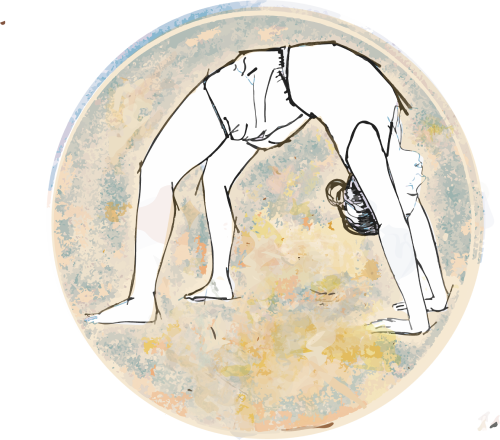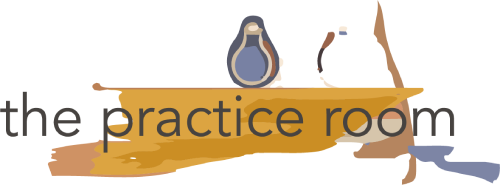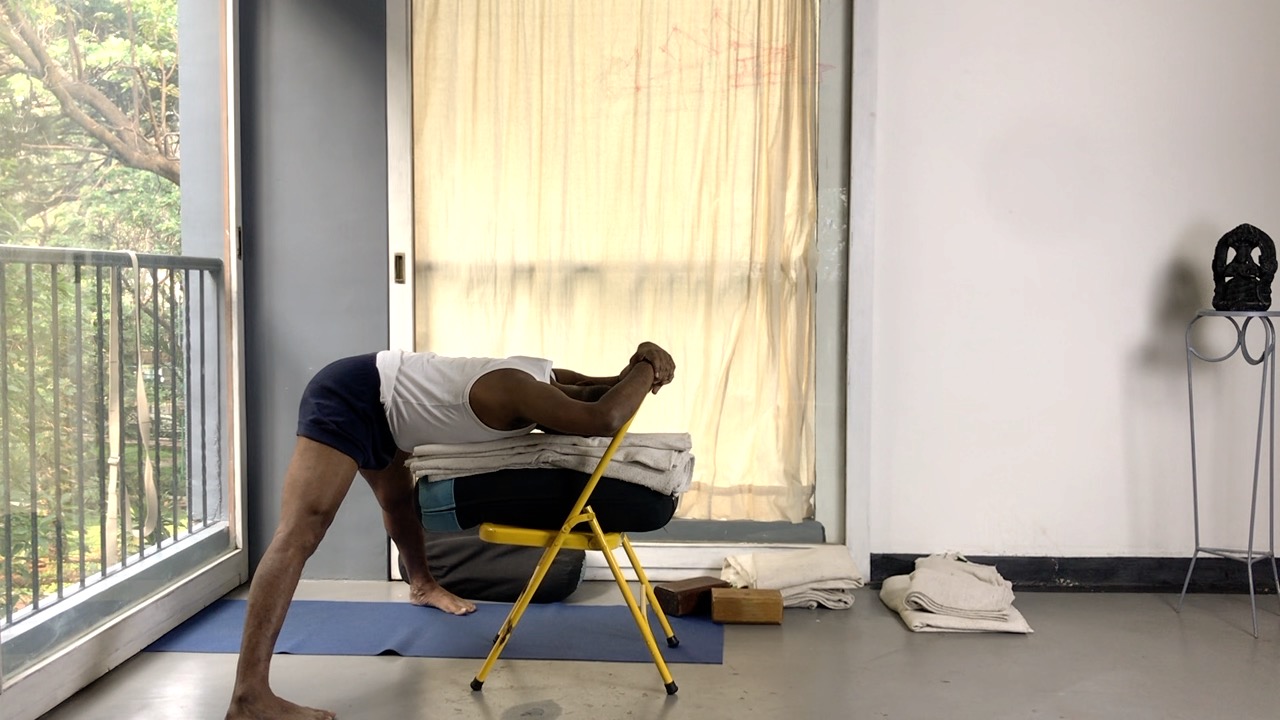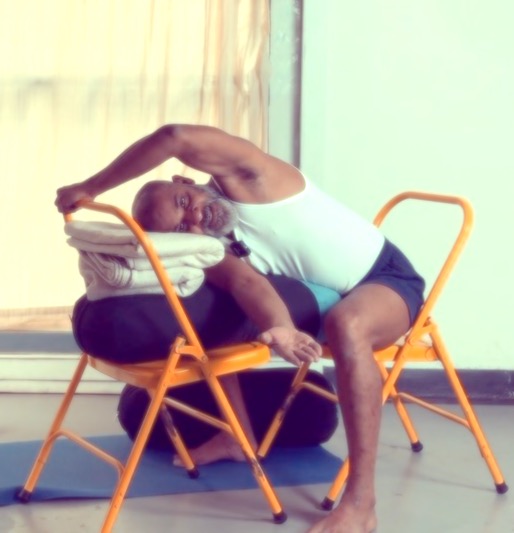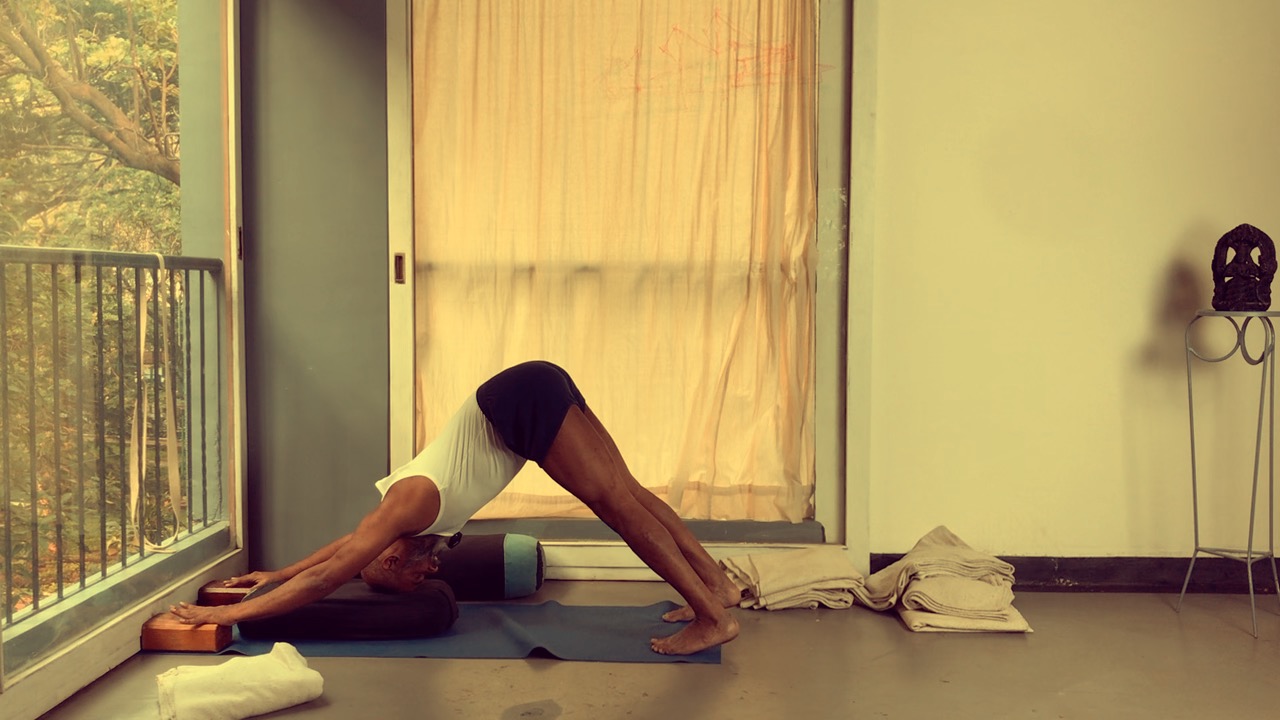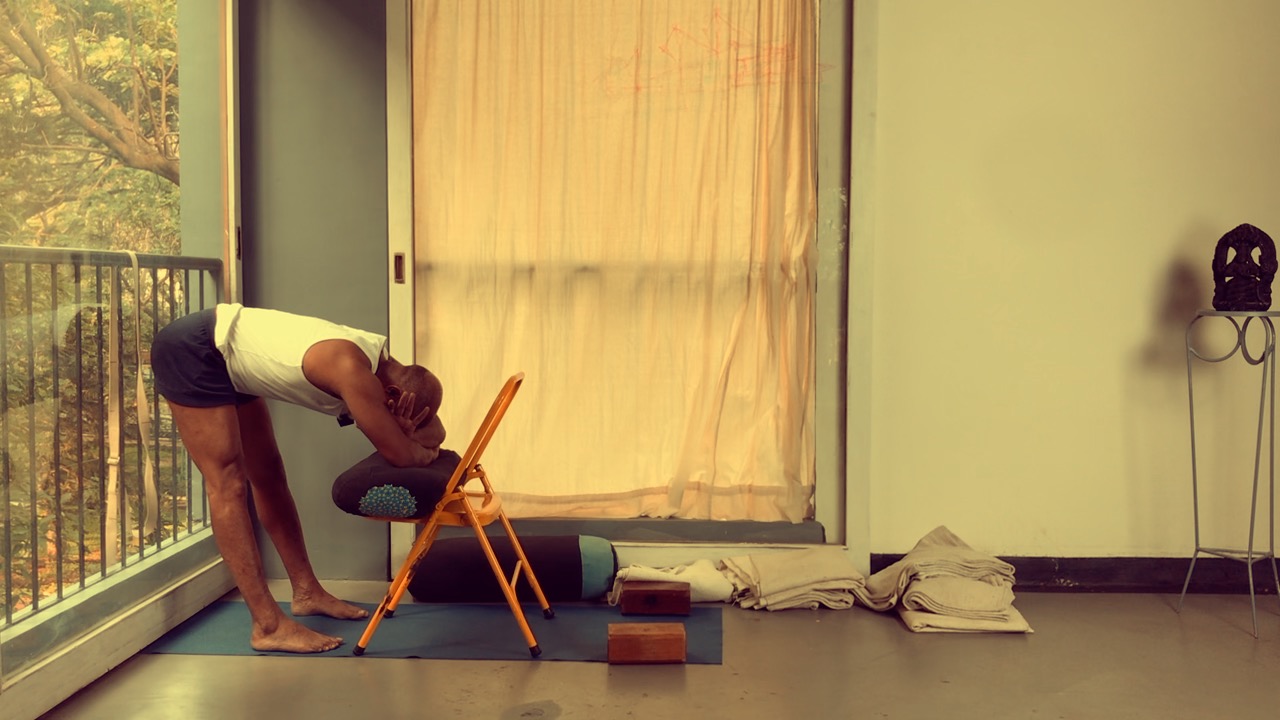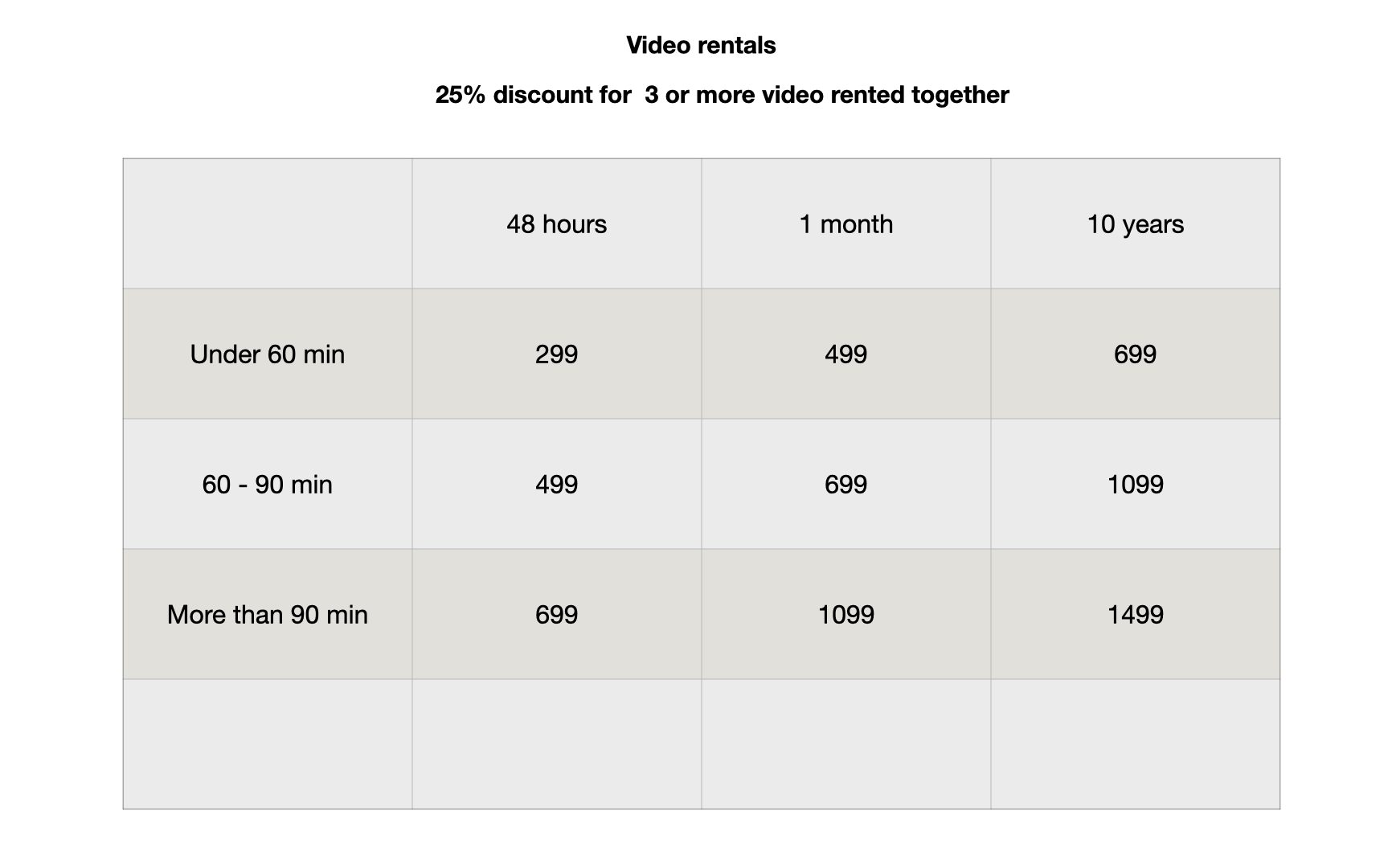This Short Course for practice during Covid Recovery is note suitable for absolute beginners.
Even though explanations and demonstrations are clearly given, it assumes basic knowledge of Asana positions, use of props, and ability to hold positions for extended periods of time.
For our free resources on Covid Recovery that Beginners can use.
All sessions in this series are based on the Program developed by IY (UK) Therapy Committee. The program itself was developed in consultation with Senior teachers in the Iyengar tradition around the world, and also based on the therapy work based on developed by shri BKS Iyengar.
The entire sequence is divided into 14 categories. In our recording, we have broken the full practice into multiple parts for practical reasons. The complete sequence is listed separately for reference.
Positions are shown using the prop arrangements in the published sequence. For home practice, household object and furniture can be used to adapt the positions, even if the exact props are not available.
This first session of this Short Course covers the categories of Prone and Supported standing asanas. It is preceded by a short segment of preparatory work that is not part of the original sequence, it is given here for healthy practitioners to gain a better understanding of how our body position effects our breathing. This section should be skipped in case one is actually recovering from Covid.
PRONE POSITIONS
To be prone means to support the abdomen, chest and head on a surface. It could be face down on a bed, face down on a floor, or on another suitable support eg along a bolster in Adho Muhka Virasana, along a table in Prasarita Padottanasana, along a bench in Ardha Uttanasana.
There are many examples in yoga where the front trunk is completely supported.
BENEFITS OF BEING PRONE
Supporting the front trunk allows the back body to broaden and lengthen and the diaphragm to soften. This makes space for the lungs to work more efficiently. The back of the lungs has a denser network of air sacs (alveoli). Being placed in a prone position leads to an improved uptake of oxygen to the blood.
When the front trunk or the back spine are fully supported, the structure broadens, which releases tension in the diaphragm, allowing the vagus nerve to become less restricted, which in turn allows the parasympathetic nervous system to flow with ease. This calms both the emotions and the physical body. The heart and the gut will become calmer, reducing anxiety and fear.
SUPPORTED STANDING ASANAS
The feet and legs are the foundation of the body. Standing asanas generally have a strengthening and toning effect developing stamina, strength and flexibility. Supporting any standing asana allows for the benefits of the asana without so much effort.
BENEFITS OF SUPPORTED STANDING ASANAS
Supported standing asanas can energise physically and mentally and thereby lift one’s mood. The featured standing poses are supported forward asanas which increase the blood supply to the brain, remove fatigue and tiredness and help to reduce depression. They calm the brain, remove strain from the heart and assist with easier breathing, alleviating breathlessness.

